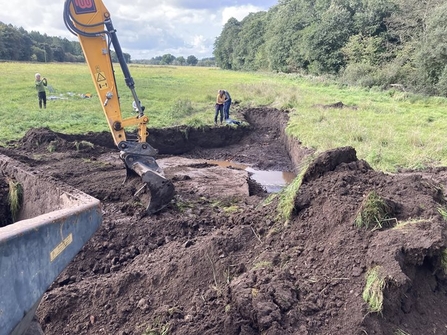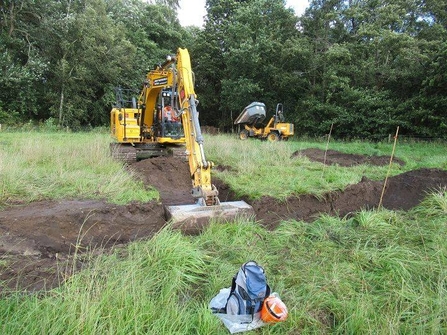This week, Norfolk Wildlife Trust is excavating arable fields at Watering Farm to rediscover a lost wildlife-rich landscape characteristic of the Norfolk Brecks and dating back to the Ice Age.
Watering Farm is found on one edge of NWT Thompson Common, a site with incredibly rich wildlife interest focused on its 400 rare Ice Age pingo ponds.
On site until the end of the week, NWT will be joined by academics from University College London and Brighton University, as well as members of Norfolk Ponds Project and Norfolk Geodiversity Partnership as they painstakingly dig up areas of the site that they believe to be the location of 'ghost' pingos.
Found at a time when woolly mammoths roamed the land, pingos are shallow, fluctuating pools created by small hillocks of ice melting and making depressions in the soil. Pingos harbour a variety of interesting flora and fauna, however as agricultural practices intensified, the ponds were frequently filled in and these vital wildlife-friendly features were lost from the landscape.
As they dig down into the earth and hit a layer of black peat, which indicates the original base of the pond, NWT will find seeds and organic matter that can be used to regenerate the pingos for wildlife.
Following the purchase of land at Watering Farm in 2017, NWT began excavating ghost pingos last year as part of the Brecks Fen Edge and Rivers Landscape Partnership, with funding from National Lottery Heritage Fund.


